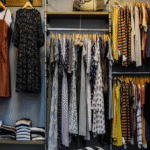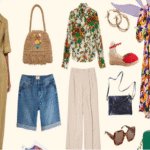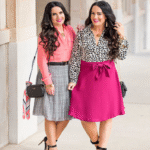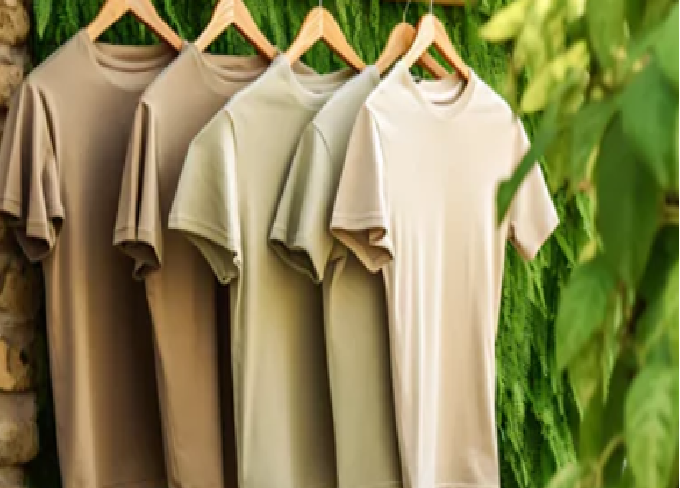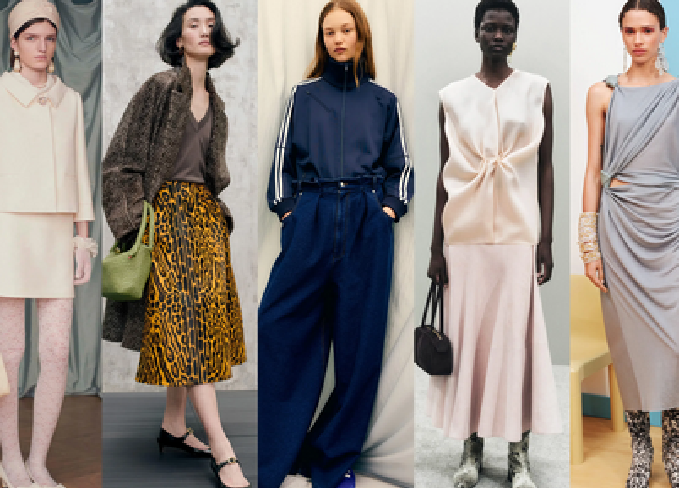Sustainable fashion has moved from a small niche into mainstream headlines. No longer limited to boutique labels or activist circles, sustainability now directs boardroom strategy, investor conversations and marketing campaigns across the industry. Consumers demand better environmental performance, regulators push for transparency, and disruptive startups bring new materials and business models. The result: a wave of change touching raw-material choices, manufacturing processes, product lifecycles and how clothes are sold and reused.
This article examines the forces reshaping fashion, highlights practical innovations, and explains how brands — big and small — are translating sustainability goals into real change. If you want a snapshot of what’s happening now and what to watch next, this guide covers the most important threads.
The problem: why fashion needs a greener future
Fashion’s environmental footprint is substantial. Conventional cotton cultivation strains water and soil, polyester relies on fossil fuels and sheds microplastics, and garment manufacturing generates waste, emissions and pollution. Add to that the social impacts — low wages, unsafe working conditions, and opaque supply chains — and it’s clear why brands are under pressure.
Two structural issues drive much of the damage:
-
Linear production model — extract, produce, consume, discard. Fast fashion accelerated turnover, shortening the lifecycle of garments and increasing landfill input.
-
Complex global supply chains — dozens of suppliers, obscure raw-material origins and little visibility across tiers make monitoring environmental and social impacts difficult.
Addressing these requires systemic change: not just swapping materials, but redesigning supply chains, sales models and consumer behavior.
Material innovations: beyond cotton and polyester
Material change is one of the most visible and immediate ways brands reduce impact. Innovations focus on reducing reliance on fossil-fuel plastics and water-intensive crops, while improving biodegradability and recycling.
Regenerative and organic natural fibers
Regenerative agriculture emphasizes soil health, biodiversity and carbon sequestration. When applied to crops like cotton or wool, it reduces pesticide use, improves water retention and can restore ecosystems. Organic certification removes synthetic chemicals, though organic alone doesn’t guarantee regenerative practices — the most progressive brands now combine both approaches.
Recycled fibers
Recycled polyester and nylon reclaim textile or plastic waste, lowering dependence on virgin fossil resources. Advances in chemical recycling are enabling closed-loop recovery of mixed fabrics, turning used garments back into high-quality fibers rather than downcycling them.
Bio-based and lab-grown materials
Biomaterials like fibers derived from yeast, algae, pineapple leaves or mushroom mycelium are rapidly maturing. Lab-grown leather alternatives and bio-based synthetics aim to mimic performance while avoiding animal cruelty and heavy emissions. Some innovations still have scaling and cost challenges, but they offer exciting long-term pathways.
Low-impact finishing and dyeing
Dyeing and finishing often use toxic chemicals and huge volumes of water. New processes — such as air dyeing, digital printing and enzyme-based finishing — cut water use and harmful effluents. Brands increasingly demand chemical-management systems from suppliers to mitigate pollution.
Circularity: designing for multiple lives
Circularity is the idea of keeping products and materials in use for as long as possible. For fashion, that means better design, repairability, reuse, resale and recycling.
Design for durability and repair
Shifting design priorities from trend-chasing to longevity involves stronger seams, timeless silhouettes and modular construction that’s easier to repair. Some brands offer repair services, spare parts, or open patterns so customers can fix clothing themselves.
Resale and buy-back programs
Secondhand marketplaces and brand-led trade-in programs extend garment life. When brands buy back used items, they can refurbish for resale or recycle materials. This reduces demand for new production and gives brands a new revenue stream.
Rental and subscription services
Clothing rental reduces the number of new garments needed for occasional use. Rental models work well for special-occasion wear and fast-trend items, and when managed responsibly, they can lower per-wear environmental impact.
Closed-loop recycling
True closed-loop recycling converts end-of-life garments back into equivalent-quality fibers. Mechanical recycling often reduces fiber quality; chemical recycling promises higher-quality output for mixed or blended textiles. Brands partnering with recycling innovators are piloting large-scale collection and processing programs.
Supply chain transparency and traceability
Transparency is no longer optional. Consumers and regulators want to know where garments are made, which chemicals are used, and how workers are treated. Brands are responding with traceability tools, audits and supplier collaboration.
Digital traceability tools
Blockchain, QR codes and other digital ledgers help map material origins and processing steps. By scanning a code, consumers can learn a garment’s journey — raw-material source, factory location and certifications. While technology alone can’t fix poor labor practices, it improves visibility and accountability.
Supplier partnerships and capacity building
Many sustainable goals require suppliers to change practices. Leading brands invest in supplier training, infrastructure upgrades and long-term contracts to support transitions to cleaner production methods and fairer workplace standards.
Third-party verification
Certifications and independent audits — when credible and enforced — provide external validation. But brands are learning that certifications are part of the solution, not the whole: real progress often needs continuous improvement plans and supplier engagement.
Business model shifts: profit with purpose
Sustainability is influencing how brands make money. Investors and customers increasingly favor companies that align sustainability and profitability.
Pricing for true cost
Some brands begin factoring environmental and social costs into product pricing, moving away from unsustainably low prices that externalize harm. While higher prices may reduce mass-market accessibility, creative models (subsidized basics, resale, rentals) can help balance affordability and responsibility.
Transparency in reporting
Sustainability reporting — on greenhouse gas emissions, water use, waste and social indicators — is becoming standard. Companies that set science-backed targets and publish progress attract more trust and investment.
Collaborative industry initiatives
Collective action — shared recycling systems, industry-level standards and public-private partnerships — helps solve problems that no single brand can fix alone. Brands participate in coalitions to scale recycling infrastructure, reduce ocean plastics, and advocate policy change.
Consumer behavior and communication
Brands can’t succeed without shifting consumer mindsets. Education, accessible offerings and clear communication are crucial.
From greenwashing to genuine storytelling
Consumers are increasingly skeptical of vague sustainability claims. Brands that provide transparent, verifiable information and tell honest stories about tradeoffs build credibility. Avoiding marketing spin and focusing on measurable progress matters.
Making sustainable choices easy
Convenience drives behavior. Brands that integrate sustainability into standard offerings — for instance, ensuring basic items are made from recycled fibers or offering easy repair options at checkout — lower friction for consumers to make better choices.
Influencing trends and taste
Fashion’s power to shift culture helps normalize sustainable choices. Designers embracing circular aesthetics, secondhand influencers and mainstream collaborations all help reposition sustainable clothing as desirable rather than niche.
Technology’s role: smarter production and consumption
Technology accelerates sustainability across design, manufacturing and consumer engagement.
AI and design optimization
Artificial intelligence helps designers optimize patterns to reduce fabric waste, choose better materials and predict demand more accurately — reducing overproduction. Smart forecasting tools align production with real demand, cutting unsold inventory.
Digital twin and 3D prototyping
3D design tools reduce the need for physical samples, shortening development cycles and lowering carbon footprints from shipping prototypes. Virtual try-on tech also reduces returns — a major source of waste in e-commerce.
Chemical and material science advances
New catalysts, greener solvents and improved recycling chemistries are technical breakthroughs enabling circularity at scale. Those innovations often come from cross-disciplinary collaboration between material scientists, startups and established manufacturers.
Regulations, policy and finance: incentivizing change
Government policy and finance shape market incentives. Extended Producer Responsibility (EPR) laws, carbon pricing and stricter chemical regulations push brands to account for end-of-life and pollution.
Extended Producer Responsibility (EPR)
EPR schemes require producers to finance or manage the disposal and recycling of their products. For fashion, EPR can support collection infrastructure and encourage design for reuse and recyclability.
Sustainable finance and investment
Investors increasingly screen for sustainability performance. Green bonds, sustainability-linked loans and ESG metrics influence capital flow, rewarding brands that can demonstrate credible progress.
Trade and tariff policies
Policy measures that prefer recycled content or penalize high-emission production can shift sourcing strategies and accelerate local manufacturing and recycling industries.
Challenges and trade-offs: nothing is simple
Sustainable fashion faces real trade-offs. Recycled fibers can still shed microplastics. Bio-based materials may require land or competing food systems. Scaling lab-grown alternatives needs energy and investment. It’s important to assess interventions holistically:
-
Absolute vs. relative gains: A recycled polyester shirt uses less fossil carbon than virgin polyester, but its microplastic shedding remains a concern.
-
Local impacts vs. global emissions: Sourcing locally can cut transport emissions but may be less efficient in production or water use depending on local practices.
-
Affordability and equity: Sustainable options often cost more; equitable access and fair transition for workers must be considered.
Brands that embrace transparent trade-off discussions, monitor real-world outcomes and avoid simplistic claims will be more resilient and trustworthy.
What to watch next: 5 trends shaping the near future
-
Scaling chemical recycling: If chemical recycling reaches cost parity and can handle blended textiles, closed-loop systems will expand rapidly.
-
Regulatory harmonization: Expect more countries to introduce EPR and mandatory reporting, pushing global brands to standardize approaches.
-
Mainstreaming resale and rental: As platforms and logistics improve, resale and rental will become normal retail channels, integrated into brand strategies.
-
Material convergence: Hybrid materials combining recycled, bio-based and high-performance properties will become more common, blurring the lines between natural and synthetic.
-
Worker-centric sustainability: Social sustainability — fair wages, safety, community investment — will receive equal attention to environmental metrics as brands respond to public scrutiny.
How brands can act now — a practical checklist
-
Map supply chains: Start with tier 1 suppliers and push visibility deeper. Use digital tools to track inputs and audits.
-
Set measurable targets: Use science-based targets for emissions and clear KPIs for water, waste and social impact.
-
Invest in circular services: Pilot buy-back, repair and resale programs and measure per-wear impacts.
-
Design differently: Prioritize modularity, repairability and materials that are recyclable or compostable.
-
Engage consumers transparently: Share both successes and challenges; provide care instructions to extend garment life.
-
Collaborate: Join industry initiatives to share infrastructure costs (recycling, take-back systems).
Conclusion — a realistic, hopeful view
The fashion industry’s journey to sustainability is neither linear nor simple. It requires creativity, investment and honest accounting of trade-offs. Yet progress is visible: materials are diversifying, circular business models are scaling, and both technology and policy are creating stronger incentives for change.
Brands that succeed will be those that combine bold innovation with operational rigor: designing products for long lives, building traceable supply chains, investing in repair and reuse, and communicating transparently with customers. For consumers and investors, the message is clear — sustainable fashion is not just an ethical choice; it’s becoming an expectation and a market demand. Together, cautious optimism and pragmatic action can steer fashion toward a greener, fairer future.

